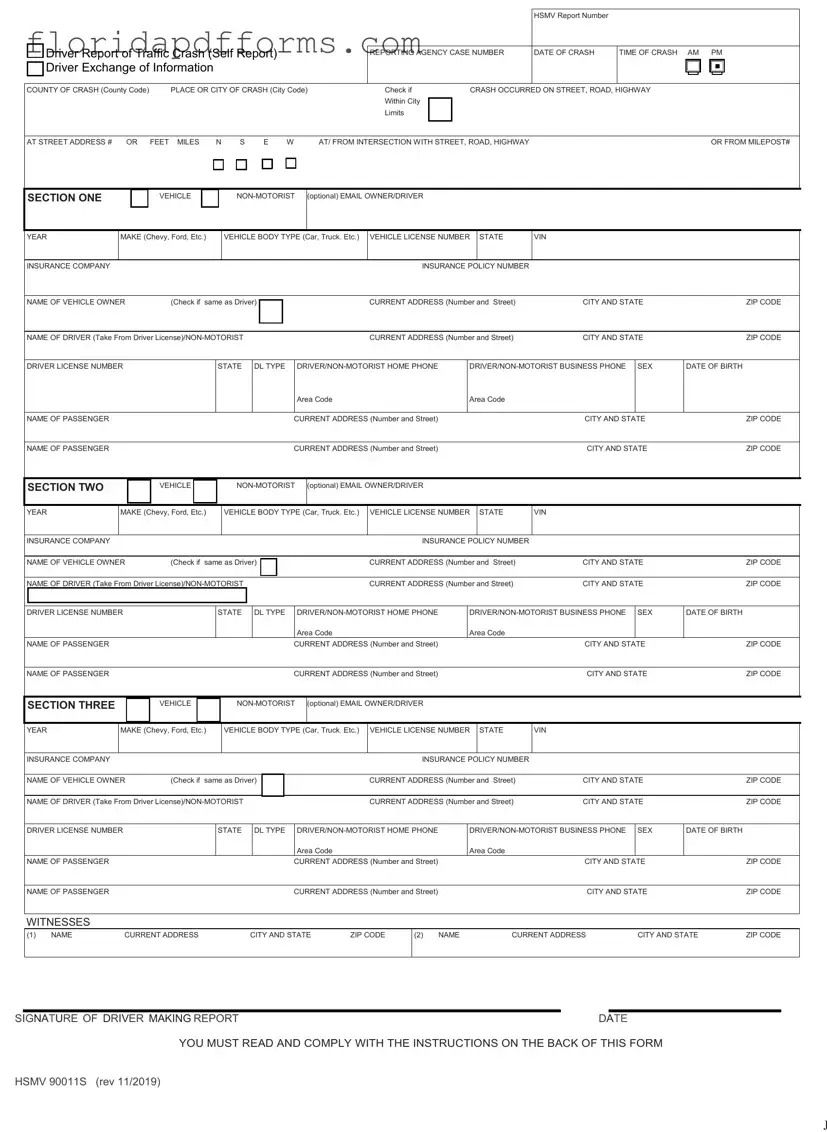The Driver Report of Traffic Crash (Self Report) is similar to an Accident Report Form used in many states. Both documents collect essential information about the crash, including details about the vehicles involved, the drivers, and the circumstances surrounding the accident. They serve as a means for drivers to report incidents that may not require law enforcement intervention, ensuring that all relevant data is documented for insurance and legal purposes.
The Driver Exchange of Information form is another document that shares similarities with the Florida Traffic Crash Report. This form is typically used at the scene of an accident for drivers to share their contact and insurance information. Like the Florida report, it emphasizes the importance of documenting the incident and facilitates communication between involved parties, making it easier to process claims and resolve disputes.
A Vehicle Accident Report is often used by insurance companies to assess claims. This document collects information about the accident, including the vehicles involved and the damages incurred. Similar to the Florida Traffic Crash Report, it serves as an official record that can be referenced during the claims process, helping insurers determine fault and compensation amounts.
The Police Report is a formal document created by law enforcement officers responding to an accident. While the Florida Traffic Crash Report can be completed by drivers themselves, a Police Report includes an officer’s observations and conclusions regarding the incident. Both documents are critical for insurance claims and legal proceedings, but the Police Report carries more weight due to its official nature.
The Incident Report is another document that resembles the Florida Traffic Crash Report. Often used in various contexts, including workplace accidents, it gathers details about the event, parties involved, and any witnesses. Like the traffic report, it is designed to create a record of the incident for future reference, whether for insurance claims or safety reviews.
The Claim Form used by insurance companies is similar in purpose to the Florida Traffic Crash Report. Both forms require detailed information about the accident, including the parties involved and the damages. The Claim Form is typically submitted to initiate the claims process, while the traffic report serves as a foundational document that supports the claim.
The Motor Vehicle Accident Report is a document used by various states to collect information about vehicle accidents. Similar to the Florida Traffic Crash Report, it requires details about the crash, including the involved vehicles and drivers. This report is essential for state records and can be requested by insurance companies to assist in claims processing.
The Witness Statement Form is often used to gather testimonies from individuals who observed the accident. This document complements the Florida Traffic Crash Report by providing additional perspectives on the incident. Both forms aim to create a comprehensive account of the event, which can be crucial in determining liability and resolving disputes.
The Liability Waiver is another document that, while different in function, shares the goal of addressing the aftermath of an incident. It is used to release one party from liability in exchange for compensation or other considerations. Like the Florida Traffic Crash Report, it serves to document an agreement regarding the responsibilities and liabilities of the involved parties.
Finally, the Personal Injury Claim Form is similar to the Florida Traffic Crash Report in that it is used to document injuries resulting from an accident. This form collects information about the accident, the injuries sustained, and medical treatments received. Both documents are vital in establishing the facts of the case and supporting claims for compensation.


 Driver Report of Traffic Crash (Self Report)
Driver Report of Traffic Crash (Self Report) 
 Driver Exchange of Information
Driver Exchange of Information